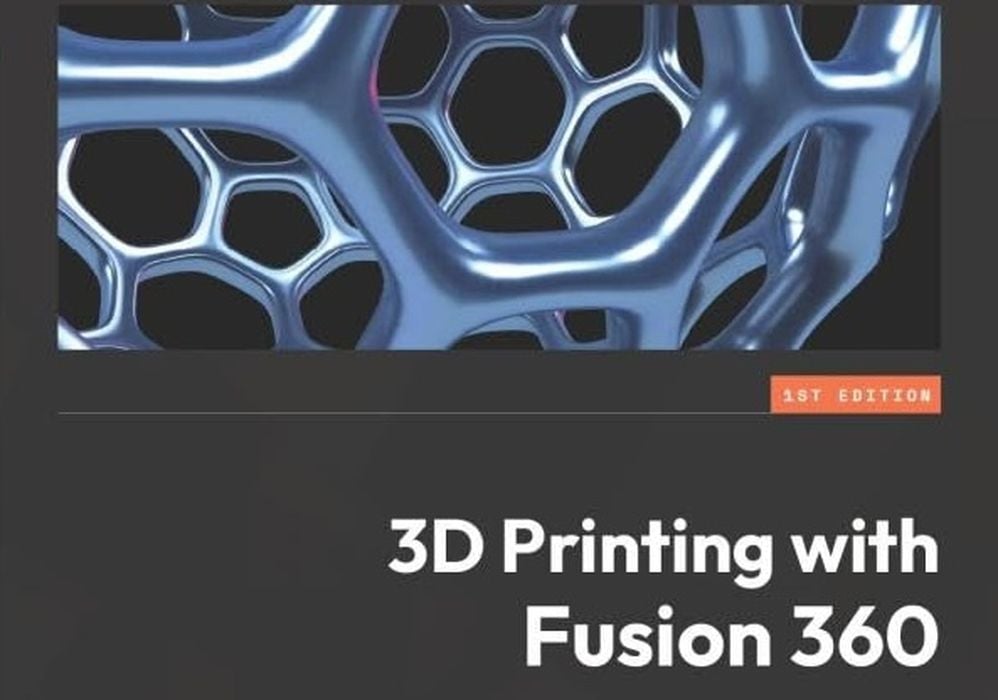
This week’s selection is “3D Printing with Fusion 360” by Sualp Ozel.
Fusion 360 by Autodesk is one of the most popular tools for creating 3D printable parts. It includes a number of features that make it easy to do so, the most notable being the parametric dimensions. You can easily adjust the size, angle and alignment of any features of a design by specifying numbers.
While there’s some of that in this book, it does cover something that isn’t often seen in other Fusion 360 texts: modifying existing meshes.
In Fusion 360 3D models can be created and stored as a BREP, exported as STP, etc. However, to 3D print these models they must be changed into a mesh, which is a representation of the shape using a “mesh” of triangles. Imagine a “net” that closely covers the exterior surface of the object.
The problem comes in when you are working with a mesh that has been produced elsewhere, and you don’t have access to the “source” STP or BREP for the object. You therefore can’t just use the standard editing tools and re-export as a mesh.
But there’s good news: Fusion 360 includes — among many other features — the ability to edit mesh files directly. However, it’s not done that often, and most books don’t focus on that aspect. Nevertheless, it’s a scenario 3D printer operators will sometime find themselves within.
The book covers a variety of techniques for editing mesh files, and in particular focusing on modifications that align with DfAM (Design for Additive Manufacturing) principles.
Another dimension covered by the book is what happens after the mesh is modified. The book proceeds through preparation steps for making the mesh printable. This includes sizing, orientation, print plate placement, and more.
This book provides a very different look at using Fusion 360 for 3D printing in a way that other Fusion 360 text do not.
We’re an Amazon Associate and earn a small commission from qualifying purchases. Help support our 3D print news service by checking out this book!
Via Amazon
